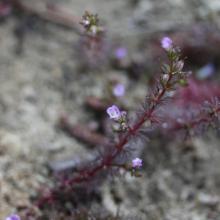
Du-ung Wetland Ramsar Site
- Country:Republic of Korea
- Site number:1724
- Area:6.7 ha
- Designation date:20-12-2007
- Coordinates:36°50'N 126°11'E
Materials presented on this website, particularly maps and territorial information, are as-is and as-available based on available data and do not imply the expression of any opinion whatsoever on the part of the Secretariat of the Ramsar Convention concerning the legal status of any country, territory, city or area, or of its authorities, or concerning the delimitation of its frontiers or boundaries.
Overview
The Du-ung Wetland Ramsar Site is a rare coastal freshwater lagoon on the west coast of the Republic of Korea, which is fed by underground water. The Site is situated between the sand dunes on the coast and a mountainous area. The prolonged process of weathering has led to the formation of thick soil in the mountainous area, making the Site ideal for the proliferation of vegetation. Despite being the smallest Wetland Protection Area Site in the nation, the wetland supports a high diversity of vascular plants, with 264 species from 177 genera and 68 families. The Site also supports a wide variety of animal species, consisting of 11 species of mammals, 53 bird species, 11 species of fish, seven of amphibians, six of reptiles, 246 of terrestrial insects and 60 of benthic invertebrates. Some of these are globally threatened, such as the endangered Japanese eel (Anguilla japonica), and the vulnerable wild common carp (Cyprinus carpio) and pond frog (Pelophylax chosenicus). With its high biodiversity, Du-ung Wetland has attracted various projects since 2002 on wetland, natural monument and ecosystem conservation.
Administrative region:
Chungcheongnam-do Province
- National legal designation:
- Wetland Conservation Area
- Last publication date:27-07-2017
